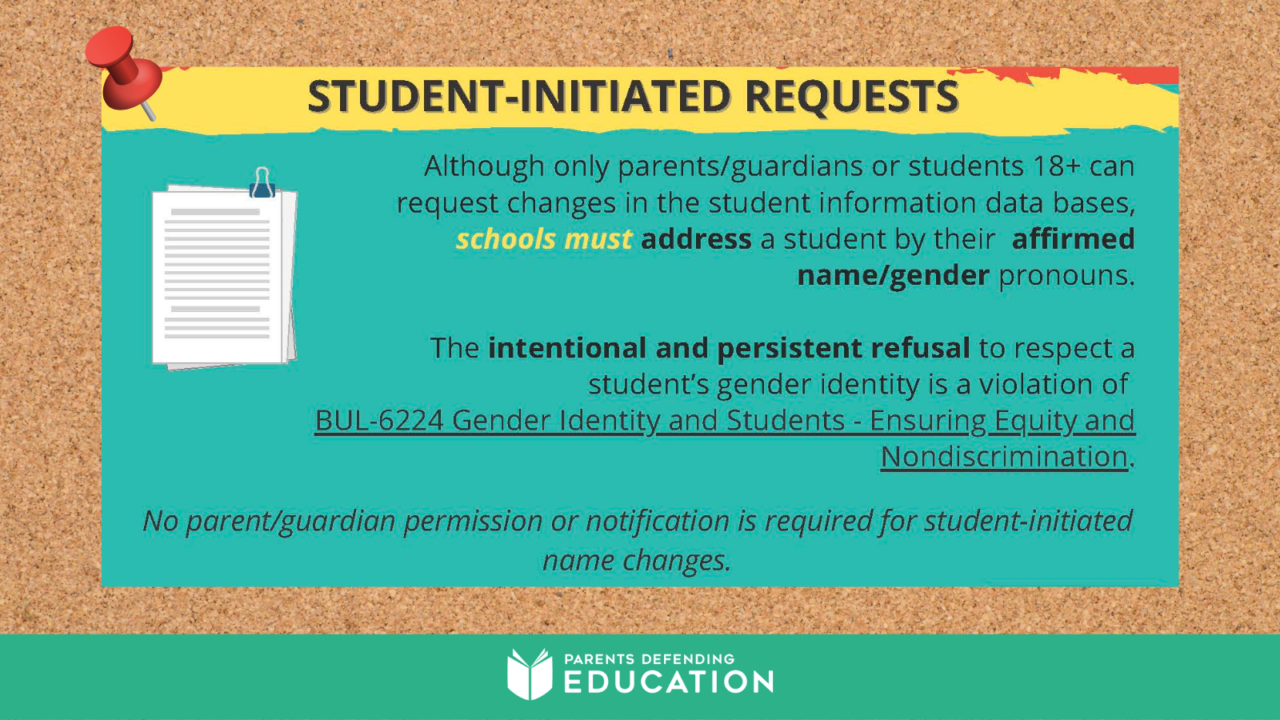
Los Angeles Unified School District trains teachers in using the preferred names and pronouns of transgender students; encourages teachers to call out colleagues who disagree
Incidents
A staff member at Los Angeles Unified School District stated that he participated in a “cult-retreat-like experience” where faculty had to participate in “socioemotional learning” training that involved “critical social justice gender ideology.” He continued to explain that the staff were led by a “restorative justice teacher” and that staff were also given handouts “to address when students or staff make an ‘unacceptable’ error in words or actions that are against gender ideology.”
He said that “the trainers called for us to raise our hands if we could commit to using preferred pronouns and STAND UP if we commit to using trans students’ preferred names.” If staff didn’t stand up, he explained that “it was an obvious sign that you’re problematic and bigoted and in the wrong.”
He provided a document of the handout given to staff. The handout is titled “Identity Working Terms” and includes a definition for the term “gender identity.” The document states that gender identity is “our innermost feelings of who we are as a woman, man, both, and/or neither.” The handout continues to state that people can communicate their gender identity through “the ways we act,” “our clothing,” “hairstyles,” “makeup use,” “our voice,” “the ways we move our bodies,” and “other forms of presentation.”
One page of the handout is titled “Interrupting Bias: Calling Out vs. Calling In.” The handout encourages staff to call out the following perceived problems:
- When we need to let someone know that their words or actions are unacceptable and will not be tolerated
- When we need to interrupt in order to prevent further harm
- Will likely feel hard and uncomfortable, but necessary
- Allows us to hit the “pause” button and break the momentum
The handout then provides examples of phrases that staff can use. One phrase states: “That word/comment is really triggering and offensive. Be mindful and pick a different word.” Another example of a phrase states: “That’s not our culture here. Those aren’t our values.”
The handout also states that students have the “right” to have their “gender identity” supported. The handout explains:
Gender affirmation is an interpersonal, interactive process whereby a person receives social recognition and support for their gender identity and expression. All students have the right to be referred to by their chosen name/pronouns, regardless of their legal or school records. A legal name change is NOT required for unofficial name changes.
Another page of the handout is titled “Gender Support Checklist for Transgender and Non-Binary Students.” The page is a checklist for staff who have students who identify as “transgender” or “non-binary” to consider. A few examples listed in the checklist include:
- What name will the student use?
- Do we know the pronouns this student wants to use? (Some students may not use pronouns at all. You may also have students who use multiple pronouns.)
- Is the student’s gender marker being changed in the school database?
- Does this student have affirming family members?
- Has the school connected the family to local resources such as Transgender or Non-Binary Parent Support Group? (Do this only if this is safe for the student. Always ask the student about family dynamics.)
- Which restroom(s) will the student use?
The handout also features the “Gender Unicorn.” The “Gender Unicorn” is a graph featuring a unicorn that activists have used in an attempt to teach children that “gender identity” and “gender expression” are on a spectrum. Additional attributes mentioned by the “Gender Unicorn” graph include who students are “physical attracted to” or “emotionally attracted to.”
Stay Informed
